In the past few decades, numerous archeological sites in Taiwan have unearthed a large number of glass bead artifacts. These sites are scattered along the coast and in the mountains. The earliest known glass bead artifacts date back nearly two thousand years. The "Old Xianglan Archeological Site" in Taitung County's Taimali Township has been continuously excavated since the end of 2003, yielding thousands of finished glass beads, dozens of glass waste, and artifacts related to metal processing.
To understand the stories behind these glass beads, we examined the surface patterns and bubbles of the glass beads under an optical microscope. The majority of the beads from the "Old Xianglan Archeological Site" show parallel lines to the hole orientation on their surfaces and cross-sections, indicating that they were made using the "drawing method." Their appearance also matches the typical characteristics of "Indo-Pacific beads."
But among these glass materials, some solid glass strips were wound around metal rods. This shows they were made using the "Winding Method." This suggests that the local glass bead crafting in "Old Xianglan" back then used the winding method, not the drawing method. From this, we think the drawn beads found in "Old Xianglan" may have been traded with other places and then brought to "Old Xianglan."-
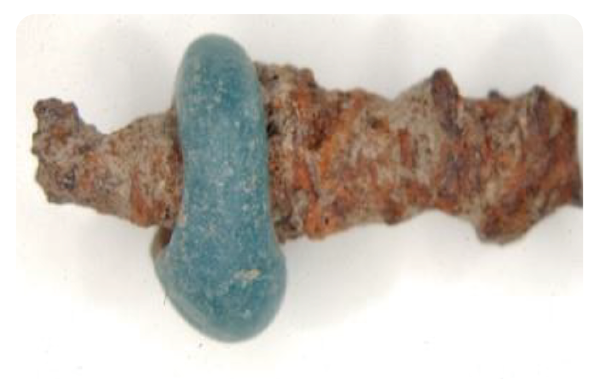 Glass Beads Wound Around Metal Rods
Glass Beads Wound Around Metal Rods -
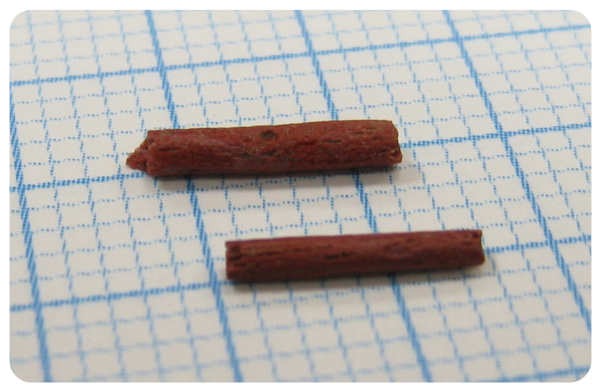 Materials Used for Making Glass Beads
Materials Used for Making Glass Beads
(The red glass strip is about 1.5 cm long)
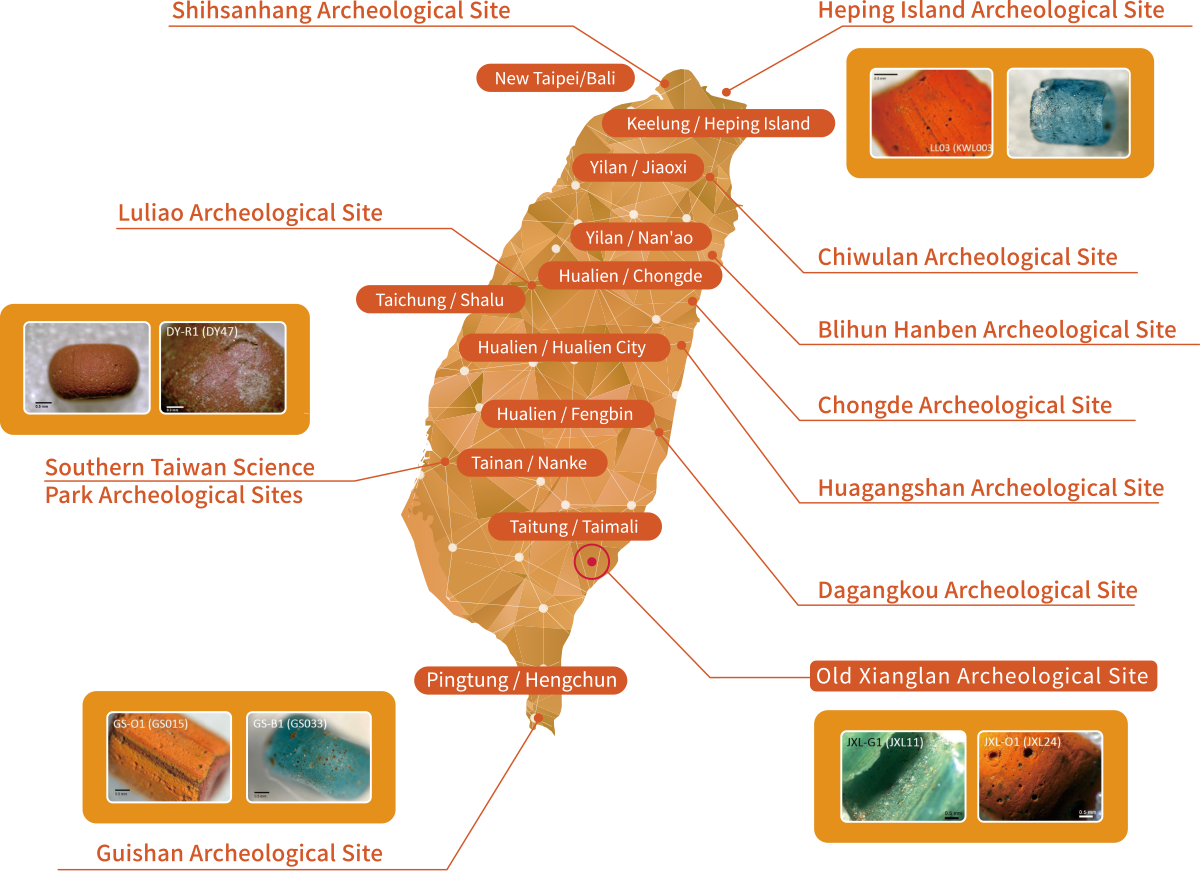
-
Craft Waste
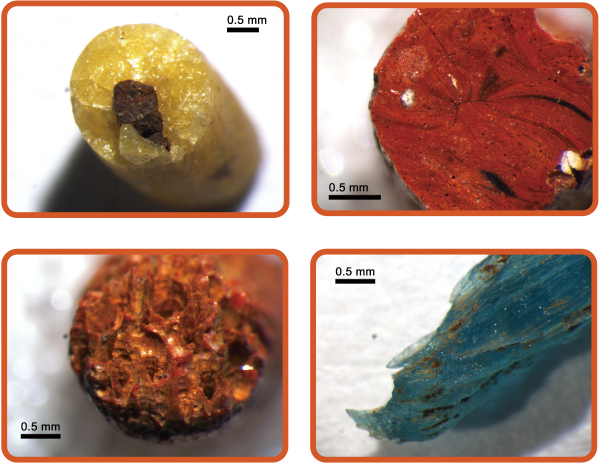 "Old Xianglan Archeological Site"
"Old Xianglan Archeological Site"
Excavated samples of glass bead crafting waste -
Drawing Method
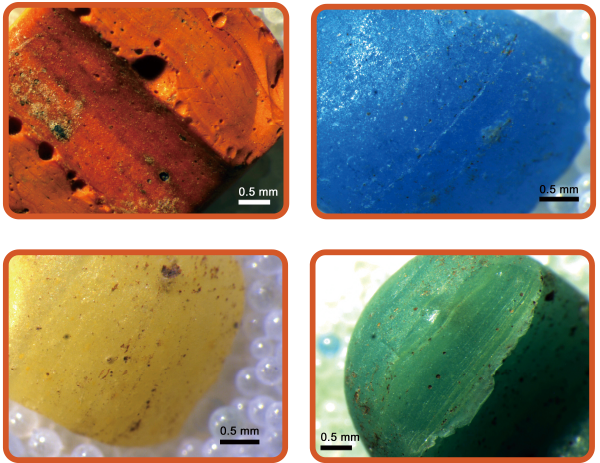 "Old Xianglan Archeological Site"
"Old Xianglan Archeological Site"
Excavated samples of glass beads -
Winding Method
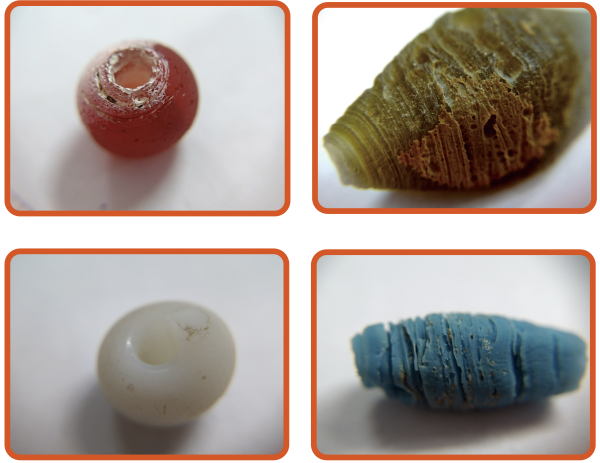 "Chiwulan Archeological Site"
"Chiwulan Archeological Site"
Excavated samples of glass beads
Map of Taiwan and the Region around the South China Sea

Yellow Glass Beads
-
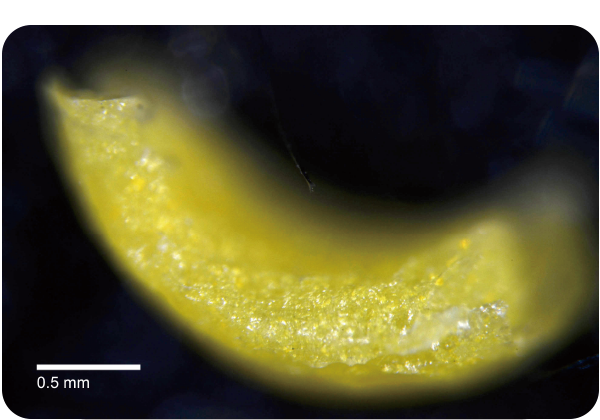 Observation of glass bead appearance under an optical microscope
Observation of glass bead appearance under an optical microscope -
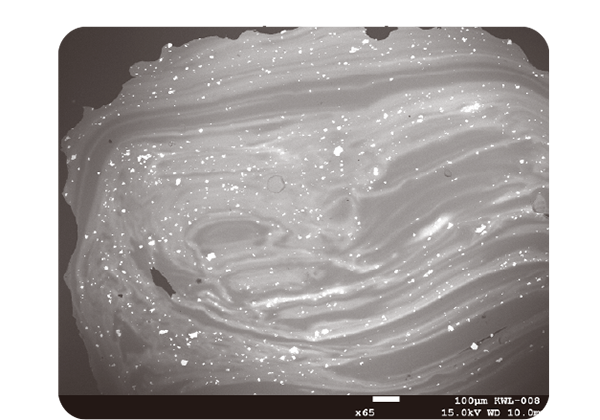 Glass microstructure magnified 65x through SEM-EDS scanning
Glass microstructure magnified 65x through SEM-EDS scanning -
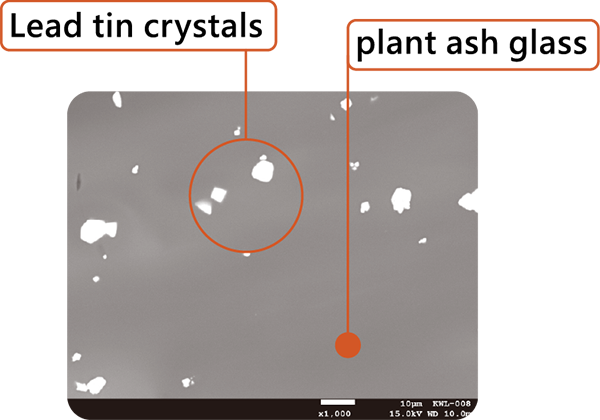 Glass microstructure magnified 1000x through SEM-EDS scanning, showing lead tin crystals (white dots) and plant-ash glass.
Glass microstructure magnified 1000x through SEM-EDS scanning, showing lead tin crystals (white dots) and plant-ash glass.